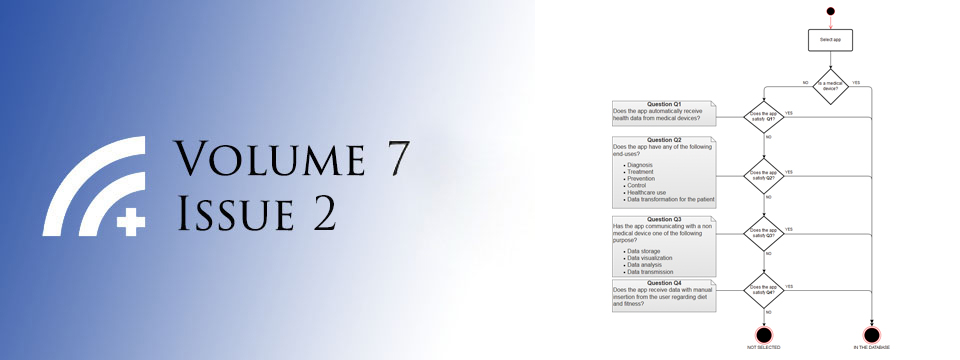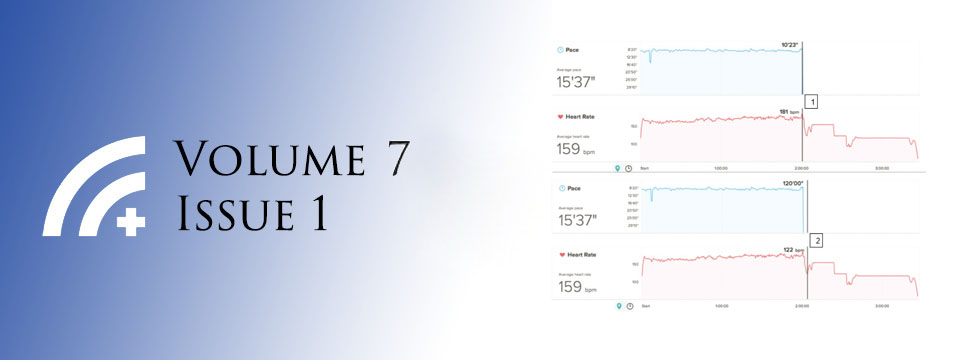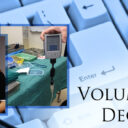Posted on Apr 19, 2013 in Original Article |
Geena Skaria1
1Assistant Professor, Dept. of Health Information Management, Manipal University, Manipal
Corresponding Author:geena.skaria@manipal.edu
Journal MTM 2:1:26-29, 2013
DOI:10.7309/jmtm.2.1.5
mHealth is one area which has major scope in developing countries like India, especially in the field of health Information delivery. It can play a major role in improving the health literacy among rural population. But there are barriers to the growth of mHealth in India. India is a country with numerous languages, diverse culture and living styles which makes it difficult to propagate standard set of information to people from all walks of life. Innovative ideas should be formulated to target people with differing languages and literacy levels, thus widening the scope for mHealth development in India.
Introduction
Global health challenges have gained attention in last few years. This changing scenario has influenced the life style of people around the globe. The standard of living is comparatively higher than that of previous century. The more the comfort, more is the risks towards health. In modern societies, almost every aspect of our lives is challenged with questions and decisions on health. People are expected to take health decisions for themselves or for their families at some point of their life.(1) It is at this point people seek information related to health. Technology now has a huge influence on people’s life, which makes people more depended to it. Mobile phone is one such device which has created revolution in the world. It has now made world into a smaller place where almost everyone around the globe is within your reach. Mobile phone has put its strong feet in the industry throughout these years by arming itself with additional features like SMS, MMS, music /video downloads, video conferencing and so on, thus becoming the cheapest means of communication and entertainment in the modern world.
Posted on Jul 16, 2019 in Perspective Pieces |
Rose Liu1
1School of Medicine, Nursing and Health Sciences, Monash University, Clayton VIC, Australia
Corresponding Author: roseliu378@gmail.com
Abstract: Access to dermatology services in rural and remote Australia is challenged by geographical isolation, expense and long waiting periods for specialist consultations. This is particularly concerning as Australia is a country with one of the highest rates of melanoma and melanoma mortality in the world. Advances in Artificial Intelligence and telemedicine can increase access to dermatological care disease.
This perspective piece evaluates these technologies and the issues faced during previous implementation attempts in Australia.
Journal MTM 8:1:50–52, 2019
doi:10.7309/jmtm.8.1.6
Key words: “Teledermatology” “Telemedicine” “Mobile Health” “Dermatology” “Artificial Intelligence” “Public Health”
Posted on Apr 19, 2013 in Perspective Pieces |
Prof. John Tiller1
1Department of Medicine and Surgery, University of Melbourne, Australia
JournalMTM 2:1:30-33, 2013
DOI:10.7309/jmtm.2.1.6
Introduction
The stereotype of the psychiatrist with a notepad sitting behind a patient on a couch is now quaint and largely historical with little relevance to contemporaneous practice (1). The digital revolution has brought about major changes in psychiatry. Psychiatric information used to sit in books and journals in physical libraries and is now largely available in electronic libraries or on the web. References with this article reflect that trend, which give rise to the concept of mobile technology enhancing the practice of the psychiatrist. Consent for the use of such devices and methodologies is implied.
The change began with use of word processors and then computers in the writing of reports and general correspondence. This progressed with the use of voice dictation in writing doctor’s letters and reports. With a new generation of doctors being skilled at touch typing, some even record their patient notes as interviews proceed. The availability of assessment templates has meant that doctors following such templates may be more likely to complete an adequate assessment covering the relevant clinical areas than completing assessments with a blank piece of paper and no structure. Adaptive templates can allow brief notes in one area or an extensive elaboration in another, depending on the clinical presentation. Though this process began with mainframe and then desktop computers, it has now migrated to notebooks, ultrabooks, and tablets.
Posted on Jul 16, 2019 in Perspective Pieces |
Jordan Koll1, Douglas Martin MD FRCP(C)2,3, Gregory Hansen MD FRCP(C) MPH MSc4
1Public Health Agency of Canada, Winnipeg, Manitoba, Canada; 2Department of Emergency Medicine, University of Manitoba, Health Sciences Centre, Winnipeg, Manitoba, Canada; 3Shock Trauma Air Rescue Society (STARS), Winnipeg, Manitoba, Canada; 4Divison of Pediatric Critical Care, University of Saskatchewan, Royal University Hospital, Saskatoon, Saskatchewan, Canada.
Corresponding Author: gregory.hansen@usask.ca
Journal MTM 8:1:53–60, 2019
doi:10.7309/jmtm.8.1.7
Introduction: Improving communication between all providers involved with rural trauma and urgent care patients may be beneficial. In our proof of concept study, we examine the potential of an open architecture and flexible smart phone system, utilizing an affordable, off-the-shelf and secure application called Wickr.
Methods: Two patient scenarios were constructed to test the capabilities of the Wickr application for data transfer. Roles were distributed between three players: one represented the transport medical doctor, another played the air medical crew, and the final assumed all the other roles. As the two scenarios unfolded simultaneously, phone conversations, text messages, pictures, and imaging files were conducted between the players by smart phones via downloaded Wickr applications. Upon completion, players answered nine questions on a 5-point Likert scale that focused on the quality of the videos, texts and pictures shared, as well as indicators that we deemed essential to transport communication systems from our experience.
Results: Scores on video, picture and sound quality ranged from good to excellent. Scores on user friendliness, task suitability, speed, information discretion and customizable data retention ranges from somewhat agree to agree.
Conclusion: Wickr was quick, user friendly, and well suited for the clinical communication during simultaneous patient scenarios. Whether it is a capable system for a busy helicopter emergency medical service has not been evaluated.
Key Words: emergency medical services, mhealth, rural health, telemedicine, emergency care, Prehospital
Posted on Dec 25, 2012 in News |

The Editorial Board at the Journal of Mobile Technology in Medicine is proud to present Volume 1, Issue 4, published in December 2012. Mobile technology in Medicine is a rapidly developing area, and we hope to continue accelerating research in the field. We look forward to your submissions for Issue 5.
Volume 1, Issue 4 Contents
Editorials
001 Application of mobile technology in ophthalmology to meet the demands of low-resource settings
R. Chakrabarti
Original Articles
004 Review of Neurosurgical Smartphone Applications 2012
J. Tseng
011 Precision of App-Based Model for End-Stage Liver Disease Score Calculators
S. Hews, P. Chambers
016 Medical Students’ Use of and Attitudes Towards Medical Applications
N. Koehler, K. Yao, O. Vujovic, C. McMenamin
022 An Empirical Review of the Top 500 Medical Apps in a European Android Market
V. Obiodu, E. Obiodu,
Case Reports
038 The Use of Generic Mobile Devices in Operating Proprietary Medical Devices – Example from a Case Report of Vagal Nerve Stimulation Therapy
B. Chee
Perspective Pieces
042 The Legal Perspective of mHealth in the United States
W. Garvin
In keeping with our open-access principles, all articles are published both as full text and as PDF files for download. For your convenience, attached to this post is a PDF file containing the complete Volume 1, Issue 4, which can be easily downloaded and saved for viewing offline.
We look forward to hearing from readers in the comments section, and encourage authors to submit research to be considered for publication in this peer-reviewed medical journal.
Yours Sincerely,
Editorial Board
Journal of Mobile Technology in Medicine
Posted on Jul 16, 2019 in Original Article |
David Simmons FRACP MD1, Tosin Daniels BSc (Hons)2, Daniel J Simmons BEng3, Mireille NM van Poppel4, Jürgen Harreiter MD5
1Western Sydney University, NSW, Australia and Cambridge University Hospitals, Cambridge, England
2Cambridge University Hospitals, Cambridge, England
3Techtonic Software, Norfolk, England
4Department of Public and Occupational Health, EMGO+-Institute for Health and Care Research, VU University Medical Centre, 1081 BT Amsterdam, the Netherlands and Institute of Sport Science, University of Graz, 8010 Graz, Austria
5Department of Medicine III, Division of Endocrinology, Gender Medicine Unit Medical University of Vienna
On behalf of the DALI core investigators group (see Appendix)
Corresponding author: da.simmons@westernsydney.edu.au
Journal MTM 8:1:37–49, 2019
doi:10.7309/jmtm.8.1.5
Background: Lifestyle programmes require a structured approach to be effective. Maintaining fidelity of coach-based interventions is challenging. Mobile devices may assist by supporting the use of an algorithm based approach.
Aims: To describe the development and challenges associated with a mobile technology approach to supporting a coach-based lifestyle programme for the prevention of gestational diabetes mellitus (GDM) in pregnancy.
Methods: Narrative approach to system design, with a survey of 12 lifestyle coaches involved in the pan-European multicentre DALI (Randomised controlled trial for the prevention of gestational diabetes mellitus (GDM) with vitamin D And Lifestyle Intervention) study.
Results: A mobile device based programme was associated with more technical issues than a web-based approach, particularly in relation to upgrades to improve usability and utility. Even after multiple upgrades, a paper approach was preferred by some coaches, and by most for aspects of the intervention that required greater coach-participant interaction (eg goal setting). Coaches generally preferred the mobile device approach for obtaining pre-existing data, structured data entry and for intervention prompts.
Conclusion: Mobile technology can facilitate coach-delivered lifestyle interventions. However, more work is required to minimise intrusion into the behavioural intervention.










